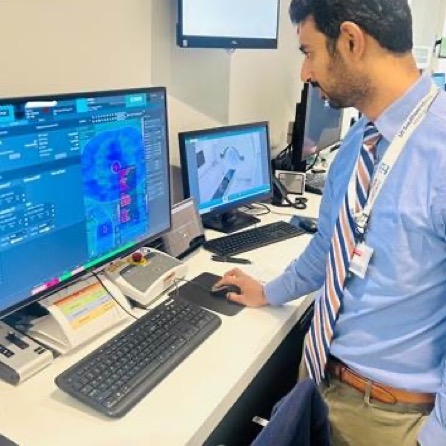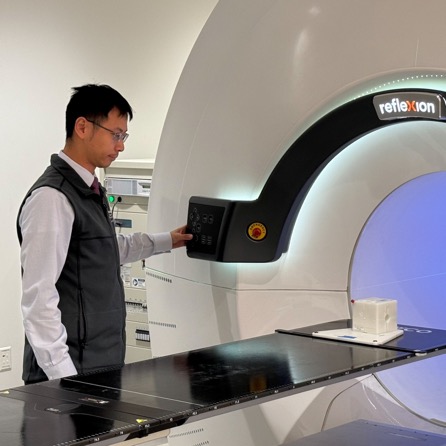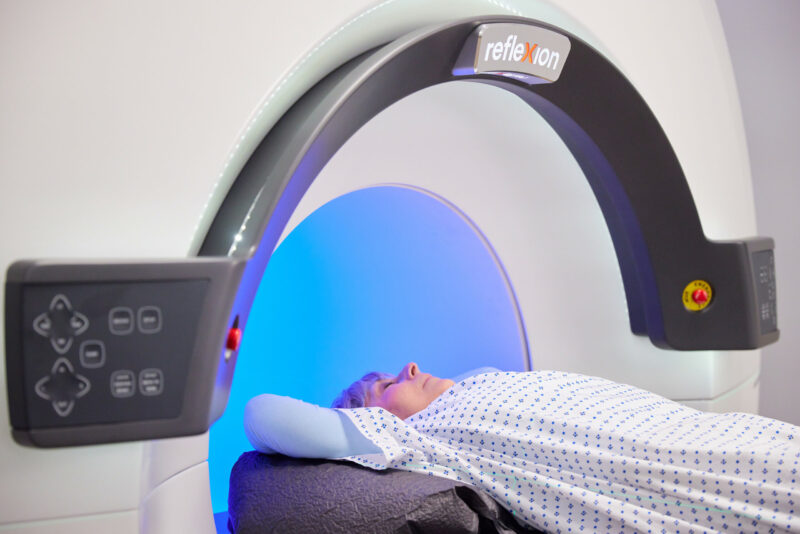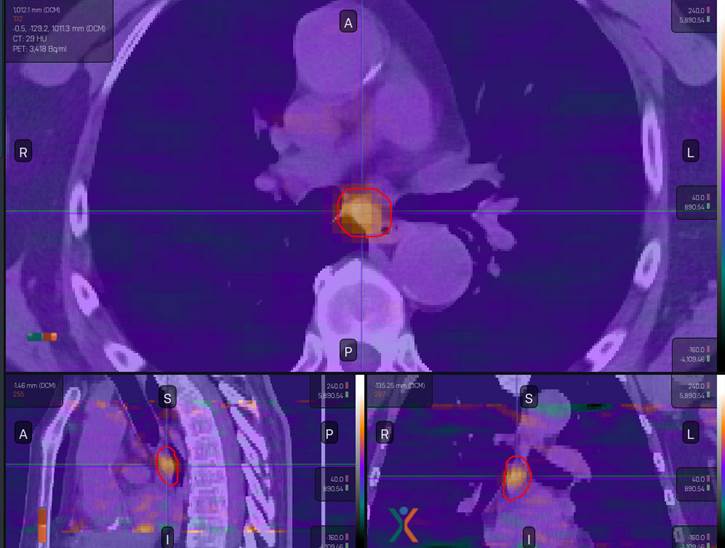
UTSW Radiation Oncology Department has imaged its first patient using Reflexion PET with the Ga68-PSMA-11 tracer
The Radiation Oncology team at UT Southwestern imaged its first patient using Reflexion PET with the Ga68-PSMA-11 tracer instead of the standard F-18.
Drs. Neil Desai and Bin Cai are co-leading a clinical trial to explore how well the Reflexion PET-linac platform can image patients and plan SCINTIX therapy using the Ga68-PSMA-11 tracer. This innovative approach combines advanced imaging with real-time radiation therapy, offering a new level of precision in treating cancer.

The success of this trial demonstrates the versatility of SCINTIX therapy and its ability to work with new tracers, opening the door to more personalized and effective treatments. It’s an important leap forward for PET-guided radiation therapy and for patients who stand to benefit from these cutting-edge techniques.

About Reflexion PET
Reflexion PET is an advanced imaging technology designed for use in radiation therapy. It employs real-time PET imaging to guide radiation delivery, targeting tumors with high precision while minimizing harm to healthy tissue.

Unlike traditional PET scans, Reflexion PET integrates imaging and treatment, using biological signals from radiotracers like Ga68-PSMA-11 to adapt to tumor movement during therapy. This innovation is part of Reflexion’s SCINTIX platform, offering a groundbreaking approach to treating complex and metastatic cancers with improved accuracy and effectiveness.
About SCINTIX Therapy
SCINTIX is an advanced radiotherapy technology designed to treat tumors in the lung and bone, including those from both primary and metastatic cancers. It uses a unique approach called biology-guided radiotherapy, which relies on real-time biological signals from cancer cells to precisely direct radiation during treatment.

The process begins with the administration of a radiotracer that accumulates in cancer cells. These cells then emit detectable signals, which the SCINTIX system captures during treatment. This live data allows for continuous adjustments, ensuring radiation is delivered only where it’s needed, even accounting for tumor movement during the session.
By targeting tumors with unparalleled precision, SCINTIX aims to enhance treatment effectiveness while reducing radiation exposure to surrounding healthy tissues.
It represents a significant step forward in personalized cancer care, offering an innovative and efficient option for patients with challenging tumor types.
About Bin Cai

Bin Cai, Ph.D. is an Associate Professor and the Director of Advanced Physics Service in the Division of Medical Physics & Engineering within the Department of Radiation Oncology at UT Southwestern Medical Center.
Dr. Cai earned his doctorate from Ohio University and completed a residency in medical physics at Washington University School of Medicine. Before joining UT Southwestern, he served as an Assistant Professor of Radiation Oncology at Washington University. He holds board certification in therapeutic radiological physics from the American Board of Radiology.
His work focuses on the clinical application, development, and enhancement of advanced radiation therapy technologies and processes, including MR- and CT-guided online adaptive radiotherapy, biology-guided radiotherapy, AI-driven radiotherapy workflows, automated quality assurance, and risk assessment for radiotherapy operations.
About Neil Desai

Neil Desai, M.D., M.H.S. is an Associate Professor and the Director of Clinical Research in the Department of Radiation Oncology at UT Southwestern Medical Center. He specializes in treating genitourinary cancers, including bladder, kidney, urethral, prostate, and testicular cancers.
Dr. Desai received his medical degree from Yale University, where he also conducted cancer biology research, earning a Master of Health Science. He completed his residency in radiation oncology at Memorial Sloan Kettering Cancer Center in New York.
His clinical focus includes advancing treatment strategies for bladder and prostate cancers, as well as managing leukemia and lymphoma. Dr. Desai has contributed to numerous articles published in leading medical journals, such as Cancer Research and The Journal of Urology.
-
Challenging the Status Quo in Colorectal Cancer 2024
December 6-8, 2024
-
ESMO 2024 Congress
September 13-17, 2024
-
ASCO Annual Meeting
May 30 - June 4, 2024
-
Yvonne Award 2024
May 31, 2024
-
OncoThon 2024, Online
Feb. 15, 2024
-
Global Summit on War & Cancer 2023, Online
Dec. 14-16, 2023
